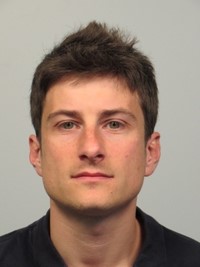Events
Ion migration in perovskite solar cells induces reversible performance losses over day/night cycling
December 5, 2016 at Perovskite Symposium: 12pm-4pm/ 36-462
Dr. Antonio Abate
Adolphe Merkle Institute, in Fribourg, Switzerland

Perovskites have been demonstrated in solar cells with power conversion efficiency well above 20%, which makes them one of the strongest contenders for the next generation photovoltaics. While there are no concerns about their efficiency, very little is known about their stability under illumination and load. Ionic defects and their migration in the perovskite crystal lattice are one of the most alarming sources of degradation, which can potentially prevent the commercialization of perovskite solar cells (PSCs). In this work, we provide direct evidence of electric field-induced ionic defect migration and we isolate their effect on the long-term performance of state-of-the-art devices. Supported by modelling, we demonstrate that ionic defects, migrating on timescales significantly longer (above 103 s) than what has so far been explored (from 10-1 to 102 s), abate the initial efficiency by 10-15% after several hours of operation at the maximum power point. Though these losses are not negligible, we prove that the initial efficiency is fully recovered when leaving the device in the dark for a comparable amount of time. We verified this behaviour over several cycles resembling day/night phases, thus probing the stability of PSCs under native working conditions. This unusual behaviour reveals, that research and industrial standards currently in use to assess the performance and the stability of solar cells need to be adjusted for PSCs. Our work paves the way towards much needed new testing protocols and figures of merit specifically designed for PSCs.
Dr. Antonio Abate is a Senior Scientist at the Adolphe Merkle Institute, in Fribourg, Switzerland. He pursued his PhD in Chemistry at the Politecnico di Milano in Italy, followed by 2 postdocs. His first postdoctoral position was at the University of Oxford where he spent 3 years working on dye-sensitized and perovskite solar cells in the group of Prof. Henry Snaith. In his second postdoctoral position he was a Marie-Curie fellow in the group of Prof. Michael Grätzel working on perovskite solar cells. His main expertise in device physics and organic-inorganic materials.






